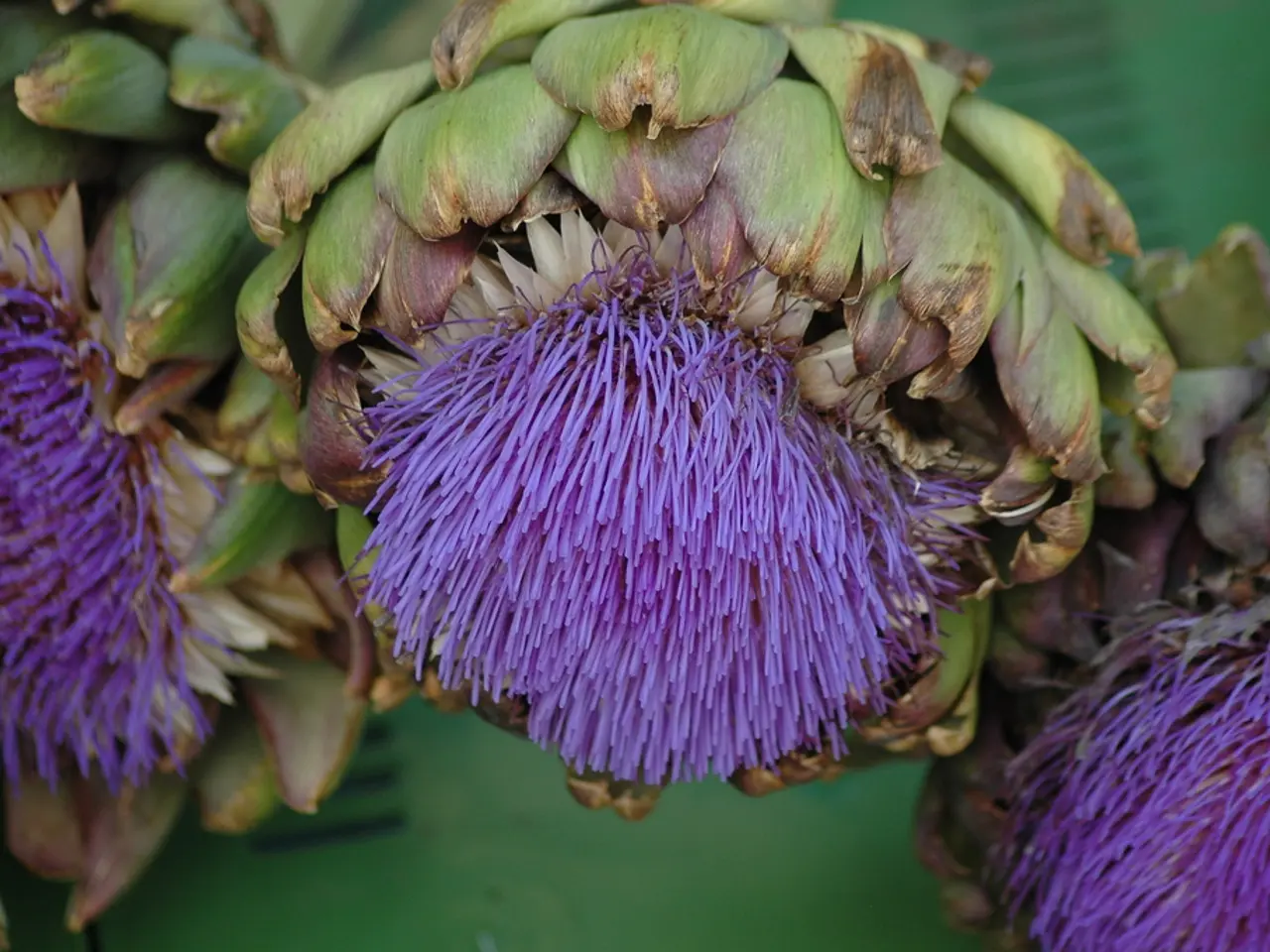Guide for Cultivating and Nurturing Globe Artichokes
Growing and Caring for Globe Artichokes: A Comprehensive Guide
Globe artichokes, with their architectural presence and delicious edible buds, make a wonderful addition to any garden. Here's a step-by-step guide on how to cultivate these perennial plants successfully.
Choosing the Right Location and Soil
Select a site with full sun and fertile, well-drained soil for your artichoke plants. These plants prefer rich soil and benefit from protection against strong winds.
Planting Time and Method
Sow artichoke seeds or plant seedlings in early spring once the danger of frost has passed. Seeds typically take 10–20 days to germinate, and plants reach maturity in about 85–120 days.
Spacing
Plant artichokes about 3–4 feet apart to allow for their large size, as plants can grow 4-5 feet tall.
Watering
Keep soil consistently moist, providing approximately 2 inches of water per week. Mulching is recommended to retain soil moisture and suppress weeds.
Fertilization
Amend soil with a balanced fertilizer rich in phosphorus before planting to support root and bud development.
Winter Care
In colder climates, protect artichokes in winter with a dry mulch such as bark or straw to prevent frost damage.
Pest and Disease Management
Watch for slugs, snails, and blackfly, which can affect young plants. Artichokes are generally disease-free, but keeping plants healthy and monitoring pests is important. Aphids may occur on globe artichoke plants, but are best controlled by encouraging natural, beneficial predators.
Pruning
After harvesting, cut down spent flower stems and old foliage in autumn to encourage healthy regrowth for the next season.
Harvesting
Harvest the immature flower buds before they open. Choose tight, compact buds for best eating quality.
Additional Tips
Regular watering and mulching greatly help develop large, high-quality buds. Artichoke plants are hardy and may be grown in various garden types, including cottage and Mediterranean-themed gardens.
Harvesting and Plant Maintenance
From early summer, cut the immature flowerheads when large enough to eat - at least golf ball size. To care for the plants, annually cut back the dead foliage and feed with a general fertiliser high in potassium in spring.
Growing from Seed
To grow globe artichokes from seed, sow late winter to early spring in individual small pots of compost, in a warm place indoors. Young globe artichoke plants may need protection from slugs and snails until established.
Buying Plants
Named varieties of globe artichoke give a better, more reliable crop than seed-raised plants. Specialist suppliers offer the widest choice of globe artichoke varieties. Sarah Raven, Suttons, and Thompson & Morgan are sources for buying globe artichoke plants.
Crop Production
The main crop of globe artichokes is produced in early summer, with a smaller, secondary crop later on. Cropping declines on older globe artichoke plants, so they should be divided and replanted every few years.
Garden Presence
If left uncut and allowed to flower, artichokes bear attractive thistle-like blooms. Globe artichoke plants grow large, reaching a height of around 1.5m tall and a spread of around 60cm.
This guidance integrates best practices from the Royal Horticultural Society and seed suppliers for successful cultivation of globe artichokes.
- By incorporating globe artichokes into your home-and-garden or lifestyle, you can benefit from their architectural beauty and delicious edible buds.
- When planning your garden, consider including globe artichokes, as they can grow effectively in cottage and Mediterranean-themed gardens, especially in locations with full sun and fertile, well-drained soil.




